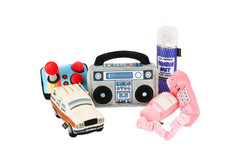Training a Siberian Husky can be a rewarding journey for both the owner and the dog. Known for their striking appearance and captivating blue eyes, Huskies are intelligent, energetic, and fiercely loyal animals. However, their independent nature and strong instincts can present some challenges when it comes to training. This comprehensive guide will explore the key aspects of training a Siberian Husky, from basic obedience commands to addressing specific behavioral issues. With patience, consistency, and positive reinforcement, you can forge a strong bond and create a well-mannered and happy companion.
Understanding the Siberian Husky:
Before delving into the training process, it is essential to comprehend the breed's characteristics. Huskies were originally bred as sled dogs, and their genetic makeup equips them with endurance, intelligence, and a strong pack mentality. Recognizing these inherent traits will help you tailor the training approach to suit your Husky's specific needs.
Siberian Huskies have a natural inclination to work and an abundance of energy, making regular exercise a must for their physical and mental well-being. Without proper outlets for their energy, they may resort to undesirable behaviors, such as excessive digging or howling.
The Fundamentals of Training:
Socialization:
Early socialization is crucial for a well-adjusted and confident Husky. Expose your puppy to various environments, people, and other animals, ensuring positive experiences to prevent fear or aggression issues later on. Socialization should begin as early as possible, ideally between 3 and 16 weeks of age.
Introduce your Husky to different sights, sounds, and smells in a controlled and positive manner. Gradually increase the exposure, and constantly monitor their reactions to ensure they remain comfortable and at ease.
Positive Reinforcement:
Huskies respond exceptionally well to positive reinforcement techniques such as treats, praise, and play. Rewarding good behavior strengthens the bond between you and your dog, encouraging them to repeat desirable actions.
When training your Husky, use treats or toys that they find particularly enticing. Reward them immediately after they exhibit the desired behavior to reinforce the connection between the action and the positive outcome. Be consistent and generous with rewards during the learning phase, gradually tapering off as the behavior becomes more ingrained.
Consistency:
Establish a consistent training routine to reinforce commands and expectations. Consistency helps your Husky understand what is expected of them and reduces confusion during the learning process.
Consistency not only applies to the timing and delivery of rewards but also to the use of commands and hand signals. Use clear and concise verbal cues and hand gestures for each control, and ensure that all family members or caregivers use the same commands to avoid confusion.
Basic Obedience Training:
Sit:
Teach your Husky to sit on command by using treats or toys as motivation. Gently press their hindquarters down while saying "Sit" and reward them when they comply.
To train the "Sit" command, hold a treat close to your Husky's nose, and slowly move it over their head. As their nose follows the treat, their bottom should naturally lower into a sitting position. The moment they sit, say "Sit" and offer the treat while praising them. Repeat the process several times, gradually reducing the need for the treat lure.
Stay:
Gradually increase the duration of "Stay" by starting with short intervals and rewarding your Husky for staying in place. Use the command "Stay" and use a hand signal for better communication.
Begin training the "Stay" command when your Husky is in a sitting position. Hold your palm open, facing your dog, and say "Stay" in a firm but gentle voice. Take a step back, and if your Husky remains in place, return to them and offer a reward along with praise. Increase the duration and distance gradually, always returning to reward and praise for a successful stay.
Come:
Encourage a robust recall response by using positive reinforcement when your Husky comes to you. Use a cheerful tone and reward them with treats, affection, or play.
Training the "Come" command is crucial for keeping your Husky safe and under control. Begin indoors or in a secure, enclosed area to minimize distractions. Crouch down, open your arms, and call your Husky by their name followed by the command "Come." When they reach you, offer generous rewards and praise. Practice this command regularly in various environments to reinforce the behavior.
Heel:
Walking on a loose leash is crucial for a well-behaved Husky. Train them to walk beside you without pulling, rewarding them for maintaining the correct position.
The "Heel" command teaches your Husky to walk calmly beside you without pulling on the leash. Start walking with your Husky on your left side, and use treats to keep them in position. Reward them when they walk calmly by your side. If they begin to pull, stop walking and wait for them to return to your side. Be patient, and with consistent training, your Husky will learn to walk politely on a loose leash.
Addressing Behavioral Issues:
Excessive Digging:
Huskies may dig due to boredom or to escape the heat. Provide ample mental and physical stimulation, and designate a digging area filled with toys to redirect this behavior.
To prevent excessive digging, ensure your Husky receives enough exercise and mental stimulation daily. Engage them in interactive games, and obedience training, and provide puzzle toys or food-dispensing toys to keep their minds occupied. If your Husky starts digging in an undesirable area, redirect them to their designated digging spot and reward them for using it.
Howling:
Huskies are known for their vocal nature, but excessive howling could be a sign of anxiety or loneliness. Address the root cause, and ensure they get enough exercise and companionship.
Huskies are highly social animals that thrive on human and canine companionship. If your Husky is howling excessively, assess their environment and daily routine. Make sure they receive enough attention, playtime, and exercise to prevent boredom and loneliness. A tired and content Husky is less likely to howl excessively.
Chewing:
Like all puppies, Huskies may chew to relieve teething discomfort or boredom. Offer appropriate chew toys and discourage destructive chewing by providing proper supervision and redirection.
Chewing is a natural behavior for puppies, and it helps them explore the world around them.
To prevent destructive chewing, provide a variety of chew toys made specifically for teething puppies. When you catch your Husky chewing on an inappropriate item, gently redirect them to their chew toys. Praise and reward them when they engage with the appropriate toys.
Exercise and Mental Stimulation:
Huskies are a high-energy breed that thrives on regular exercise and mental stimulation. Engage them in activities like daily walks, jogging, obedience training, and puzzle toys to keep their minds and bodies active.
Physical Exercise:
Due to their heritage as working dogs, Huskies require ample opportunities to expend their energy. Daily exercise is essential to keep them physically fit and mentally stimulated. Engage in brisk walks, jogging, or hiking activities to allow your Husky to release their pent-up energy. Keep in mind that Huskies are bred for endurance, so ensure they have enough time and space to run freely or play in a secure, fenced area.
Mental Stimulation:
In addition to physical exercise, mental stimulation is vital for a content and well-behaved Husky. Incorporate interactive games, puzzle toys, and obedience training sessions into their daily routine. Engaging their minds will prevent boredom, which can lead to destructive behaviors.
Agility Training:
Huskies excel in agility courses, which provide an outlet for their energy while challenging their problem-solving abilities. Agility training involves navigating through obstacles like tunnels, jumps, and weave poles. Not only does this activity provide exercise, but it also strengthens the bond between you and your Husky.
Swimming:
Many Huskies enjoy swimming, and it is an excellent low-impact activity that helps them stay cool during hot weather. If you have access to a safe and suitable swimming area, introduce your Husky to water gradually and ensure they are comfortable and confident before encouraging them to swim.
Advanced Training:
Advanced Obedience Commands:
Once your Husky has mastered basic obedience, consider teaching more advanced commands like "Leave it," "Drop it," and "Wait." These commands enhance their impulse control and responsiveness.
Off-Leash Training:
Off-leash training can be challenging with Huskies due to their independent nature and strong prey drive. However, with consistent and focused training in a secure and controlled environment, you can teach your Husky to come when called even when off-leash. Start in a fenced area and use high-value rewards to reinforce the recall command.
Sledding and Pulling:
Huskies have an instinct for pulling, and some owners enjoy engaging in dog sports like sledding or cart pulling. Before attempting these activities, ensure your Husky has mastered basic obedience commands and is physically fit enough for such tasks. Seek guidance from experienced trainers to ensure safety and proper techniques.
FAQs:
- When should I start training my Siberian Husky puppy?
It's best to start training as early as possible, ideally when your puppy is around 8 to 10 weeks old. Early training helps build a strong foundation for good behavior.
- Are Siberian Huskies difficult to train?
Huskies can be independent and strong-willed, which may make training more challenging than some other breeds. However, they can become well-behaved and obedient companions with patience and positive reinforcement.
- How do I prevent my Husky from pulling on the leash during walks?
To prevent pulling, use a no-pull harness or a front-clip harness. Reward your Husky for walking beside you and stop walking whenever they start pulling. Resume walking when the leash is loose again.
- Can Huskies be trained to coexist with other pets?
Yes, with proper socialization and training, Huskies can get along well with other pets. Start early and supervise interactions to ensure a positive introduction.
Conclusion:
Training a Siberian Husky requires dedication, patience, and an understanding of the breed's unique traits. By employing positive reinforcement techniques, socialization, and consistent training, you can nurture a well-behaved and happy companion. Remember that every dog is an individual, so be flexible in your approach and celebrate each step of progress. With love and guidance, your Siberian Husky will flourish into a loyal and well-adjusted member of your family. Through a combination of physical exercise, mental stimulation, and advanced training, you can ensure that your Husky lives a fulfilling and enriching life as a cherished member of your pack.
About the Author:
Mirza Muhammad Usman is a dedicated writer and avid dog enthusiast. With years of experience in the world of canines, he shares his insights, tips, and stories to help dog owners and lovers.





